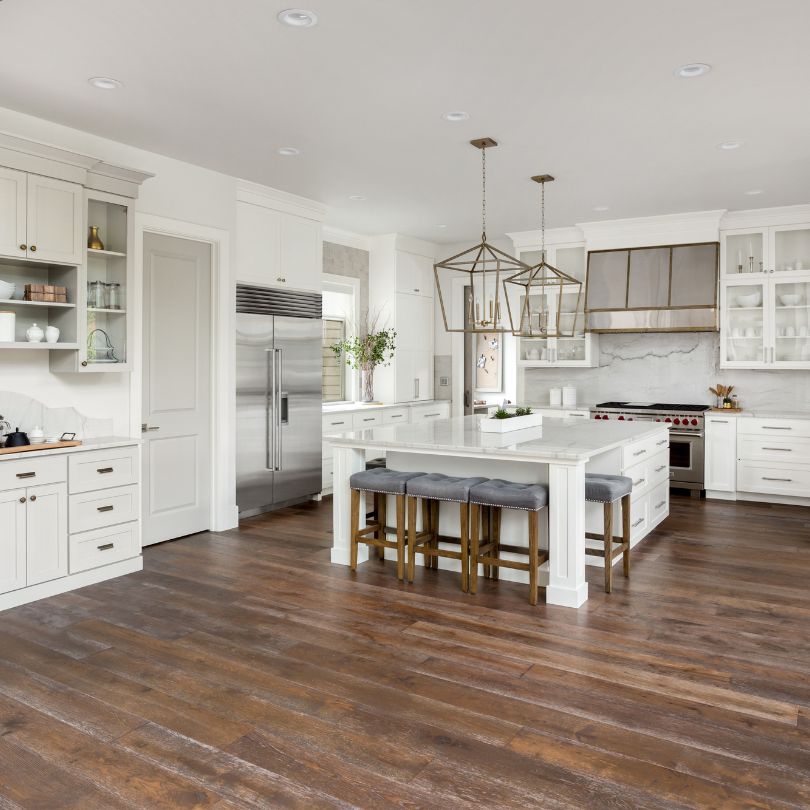
Furniture can increase the beauty of any room, but it can also cause damage to your floors if not properly managed. Scratches, dents, and scuffs can mar the surface of hardwood, laminate, tile, or even vinyl floors. Fortunately, there are strategies you can employ to prevent furniture from scratching your hardwood floors.
Use Furniture Pads
One of the simplest and most effective ways to preserve your floors is to use furniture pads. These pads, often made of felt, rubber, or plastic, can be attached to the bottom of furniture legs to prevent contact with the floor. Here’s how to use them:
- Felt Pads: These are ideal for hardwood floors. They provide a soft barrier that prevents scratches when furniture is moved.
- Rubber Pads: These are better suited for tile and laminate floors. They offer more grip, preventing furniture from sliding.
- Plastic Glides: These are perfect for carpeted areas but can also be used on hard surfaces with caution.
Ensure the pads are of high quality and are replaced regularly, as worn-out pads can be ineffective and may even cause scratches.
Consider Furniture with Soft Wheels
If your furniture has wheels, such as office chairs or mobile carts, ensure they are made of soft, non-marking materials like rubber or polyurethane. These materials are less likely to scratch floors compared to hard plastic or metal wheels. Additionally, you can purchase wheel covers or casters explicitly designed for hardwood or delicate floors.
Use Rugs and Mats
Strategically placing rugs and mats under furniture is another excellent way to protect your floors. Area rugs can add a decorative element to your room while safeguarding the floor underneath. Consider these tips:
- Entryway Mats: Place mats at entrances to catch dirt and debris that can scratch floors.
- Area Rugs: Use large area rugs under furniture like sofas, coffee tables, and dining tables. Ensure the rug is large enough to accommodate the furniture when it’s in use.
- Rug Pads: Place non-slip pads under rugs to prevent them from sliding and to provide additional cushioning.
Lift, Don’t Drag
When moving furniture, always lift it rather than dragging it across the floor. Dragging furniture can cause deep scratches and gouges. If the furniture is too heavy to lift on your own, enlist the help of others or use furniture sliders. These sliders, made of plastic or rubber, allow heavy furniture to glide smoothly over the floor without causing damage.
Regular Maintenance and Cleaning
Regular maintenance and cleaning of both your floors and furniture can prevent scratches. Dirt, dust, and debris can act like sandpaper, causing scratches when furniture is moved. Here’s how to maintain a scratch-free floor:
- Sweep and Vacuum: Sweep or vacuum your floors to remove dirt and debris.
- Mop: Use a damp mop with a gentle floor cleaner to remove grime. Avoid using too much water, as it can harm certain types of flooring.
- Furniture Cleaning: Dust and clean furniture legs regularly to avoid dirt that can cause scratches.
Use Floor Protectors
Floor protectors are another effective solution to prevent furniture from scratching your floors. These can include:
- Chair Mats: Place chair mats under office chairs to protect the floor from rolling casters.
- Furniture Cups: Use furniture cups or coasters under heavy pieces like sofas and beds to distribute weight and prevent indentations.
- Sectional Connectors: For sectional sofas, use connectors to prevent individual pieces from shifting and causing scratches.
Choose Furniture Wisely
When purchasing new furniture, consider the potential impact on your floors. Look for furniture with smooth, rounded edges on the legs and bases. Avoid furniture with metal or rough plastic feet that can easily scratch surfaces. Additionally, furniture with built-in gliders or protective pads can be a good choice.
Professional Floor Finishing
If your floors are particularly vulnerable to scratches, consider having them professionally finished with a protective coating. For hardwood floors, a polyurethane finish can provide a durable barrier against scratches. For other types of flooring, consult with a flooring specialist to determine the best protective finish.
Conclusion
Protecting your floors from furniture scratches requires a combination of preventive measures and regular maintenance. By using furniture pads, rugs, and floor protectors, lifting furniture instead of dragging it, and keeping both your floors and furniture clean, you can maintain the beauty of your flooring. Investing in high-quality furniture and considering professional floor finishing can also provide added protection. With these tips, you can enjoy your stylish furniture without worrying about damaging your floors.
